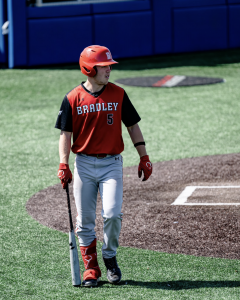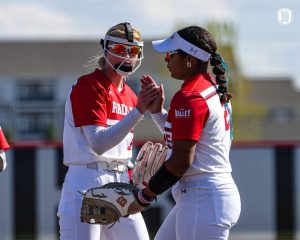It is time for a change! – By Francisco Alonzo
During the last couple of seasons, the number of strikeouts has been higher than hits, something that has never happened in the history of MLB. The league is trying to find a solution to the high rates of strikeouts and the low hitting rates.
One potential solution is moving the pitcher’s mound back, which would give the hitter more time and space to react and make contact with the ball without giving them a considerable advantage against the pitchers.
In 2019, MLB declared that they would experiment with moving the mound two feet in the Atlantic League, but it never ended up happening. Many players were against the changes and some former MLB players threatened to leave the league.
No changes have been made to the current distance of the mound since 1893, and it is time for a change. After all, experimenting to improve the game is positive for fans and for the game itself.
This year, the Atlantic League announced that they will experiment with moving the mound back 12 inches. It is not the first time that the Atlantic League has helped MLB test new rules. It will be interesting to see how it affects the game and how the fans react to this modification.
Many individuals are against moving the mound back without even looking at the positive outcomes that this adjustment could bring to the game. This alteration could generate more action on the field.
Evolution is imminent for humans in every aspect of their lives, even in sports and like everything in life, we must adapt to change. Ultimately, changes are made to improve the fan experience. The fans are the ones who will decide if they like the modification or not, and the league will make the decision based on the response of their fans.
The MLB should NOT move the pitcher’s mound back – By Brandon Younan
Major League Baseball is testing out the idea of moving the mound back in the second half of the season in the independent Atlantic League. The game of baseball has always been about tradition, and moving the mound back would be a drastic change that would affect both hitters and pitchers.
Pitchers in the game of baseball have changed since the 60-foot-6-inch mound was established back in 1893. Pitchers have become stronger, and taller which means that they are releasing the ball closer to home plate at an even faster rate than before, causing batters to have less time to react.
There is traction to the idea that moving the mound back may be beneficial to hitters and may even lower the incredibly high strikeout numbers we see in MLB now, but there is a chance it won’t. Although hitters may have more time to react to fastballs that are in or near the triple-digit mark, there is also more time for breaking balls to reach the plate.
Although the Atlantic League is currently testing the mound back one foot, there is still the thought of pitchers putting more stress on their arms to get pitches across the extra foot.
In recent years, the number of Tommy John surgeries has gone down across multiple levels of professional baseball, but this is something that could possibly change, as pitchers are going to have to learn to adjust to the new mound distance. Pitchers have been used to the original 60-foot-6-inch distance since they were young, and this change would force them to essentially relearn their art. It is almost as if MLB is attempting to punish pitchers for being dominant.
One thing that may be to blame may be the new obsession in launch angles as hitters are swinging for the fences more than ever before. Hitters are going to need to adjust to the higher velocities. There is no clear-cut evidence that moving the mound back is going to solve the problem of balls not being put in play and the high strikeout numbers.
Ultimately, we are going to have to wait and see how the Atlantic League handles these changes, but for a game that has always been so scared of change, this seems like one of the biggest leaps it has taken in a long time.





